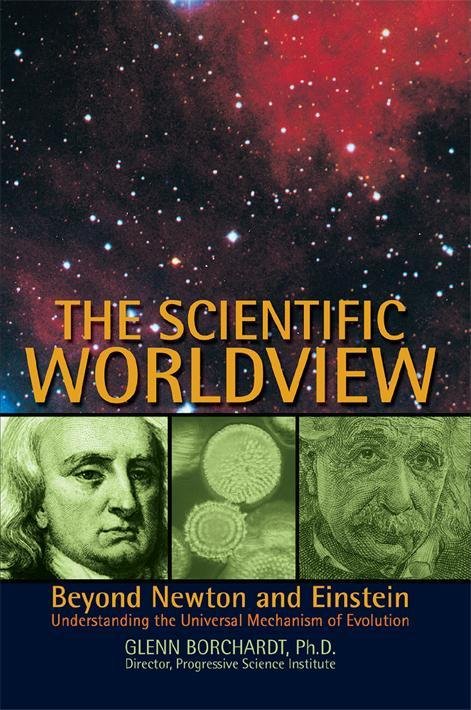Rick Dutkiewicz
I just read the New Scientist article "When
will the universe end? Not for at least 2.8 billion years".
The article is a "Reader's Digest"
adaptation (I like to say "short-attention-span version") of a paper
that can be found in the General Relativity and Quantum Cosmology section of
the Cornell University Library, "Observational support for approaching
cosmic doomsday". [ http://arxiv.org/abs/1602.06211v1 ]
I encourage everyone to take a quick scan of that
paper. It shows how many of these popular woo-woo science articles come from
conclusions drawn from a study of groups of models. Groups of models that are
based on mathematical conjectures built upon the assumptions of The Big Bang
narrative; a reality born of an immense explosion caused by "random
fluctuations", followed by an "Inflationary Period", continuing
with an "Expanding Universe" which consists of a
4-or-more-dimensional space/time "fabric", populated mostly by dark matter
and dark energy, along with a little baryonic matter which is no more than the
sub-atomic particles that pop in and out of existence at the quantum level,
held together by fields of attractive force. Isn't that the overall picture we
are asked to accept?
Drawing heavily on Bayesian probability theory, this
paper brings together a group of cosmological models and draws conclusions
after assigning probability values to each specific model. But, but, ...
The very idea of "heat death" contradicts
the law of conservation of matter and just about every other "law of
nature" that we can articulate. That's why scientists who discuss black
holes, big bangs, quantum randomness, dark matter & dark energy, string
theories, multi-universes, etc. always have to say "this is where the laws
of physics break down". Oh really?
The ridiculousness of this kind of thinking is
paralleled in many parts of modern cosmology (and religion of course). Einstein
explained gravity with the idea of "gravity wells" created by the
curvature of space. A more massive object attracts a smaller object because it
bends the space/time "fabric" downward to create a 3-dimensional
"well" that the smaller object is sucked "down" into. How
is that not explaining gravity with gravity? Your doctor might be very smart,
but if you hear him say, "your skin is inflamed because you have Inflamed
Skin Syndrome", you better ask some more questions.
You haven't explained anything if you use a word or
concept to define itself. It's the old "tortoises all the way down"
fantasy. You think you are being logical because of all your beautiful
mathematical formulae scribbled across multiple chalkboards, but you are
kidding yourself. Just because you can make great observations and
calculations, that doesn't mean you have a grasp of reality. Ptolemy proved
that you can have a beautifully complex and even largely workable model of
reality that is completely wrong. His beautiful conceptualization was just a
house of cards waiting to fall as soon as reality tapped him on the shoulder.
Mathematics (along with its study of statistical
logic and probability theory) only becomes useful when your terms can be
correlated to matter or the motion of matter. When you use a "random"
variable in your equation, that doesn't translate to a "causeless"
event in reality. When your equation puts out negative numbers or irrational
numbers, it's a good hint that you are no longer correlating to real matter or
motion. For example, when I have 40 apples in a basket, and I subtract 40
apples, the answer to that simple arithmetic is Zero. But, just because the 40
apples were real and the motion of removing the 40 apples was real, that
doesn't mean that there is such a thing as "zero apples". Zero is a
very useful concept, but it is not a real thing or action.
When physicists take real observations of matter and
motion, and put them together to create a mathematical model that results in
"heat death", that doesn't mean "heat death" has to be a
real thing or a possible event.
What ingredients go into these "Heat
Death" computer models? Models that predict events that will happen
billions and billions of years from now, and that will encompass the entire Big
Bang universe?
• 2 cups Empirical Data (finely diced with plus
and minus margins of errors)
• 1 bunch of statistical probability formulae
(to taste)
• 1/2 cup crumbled assumptions (the more inner
contradictions, the better)
• 2 Tablespoons (heaping) of random
fluctuations
• Grease the pan with "a family of
cosmological models featuring future singularities".
• Lightly flour the pan with your choice of
statistical probability philosophy.
• Serve cold to friends hungry for reinforcement of
their assumptions of indeterminism and finity.
"Does probability measure the real, physical
tendency of something to occur or is it a measure of how strongly one believes
it will occur?"










No comments:
Post a Comment